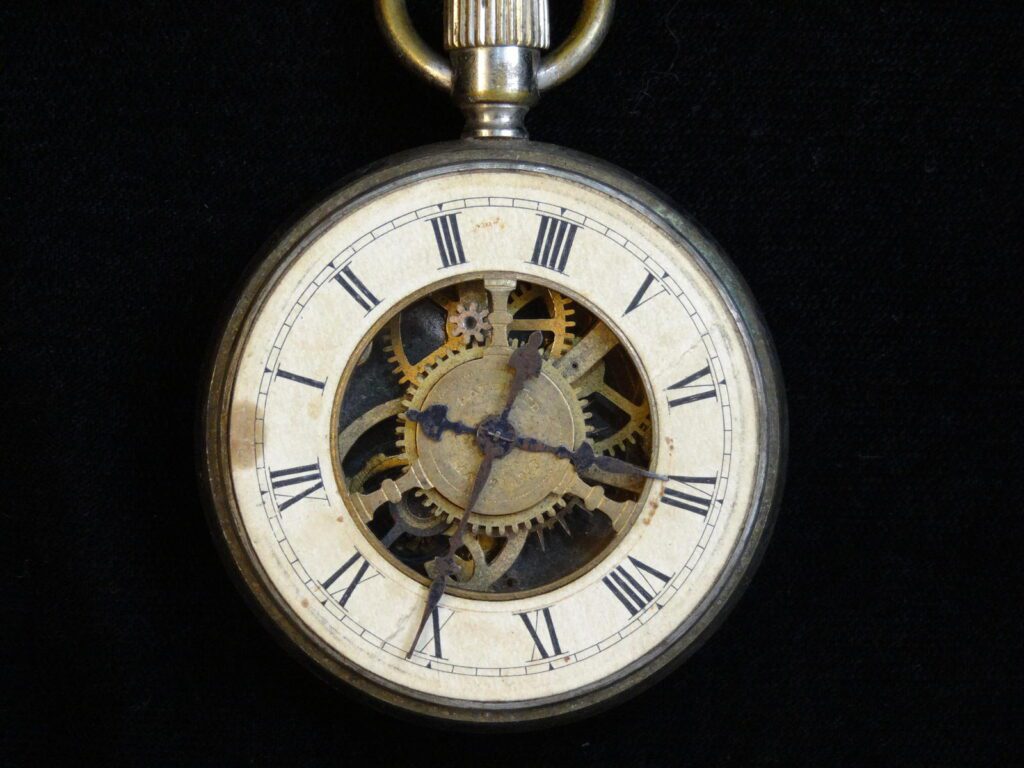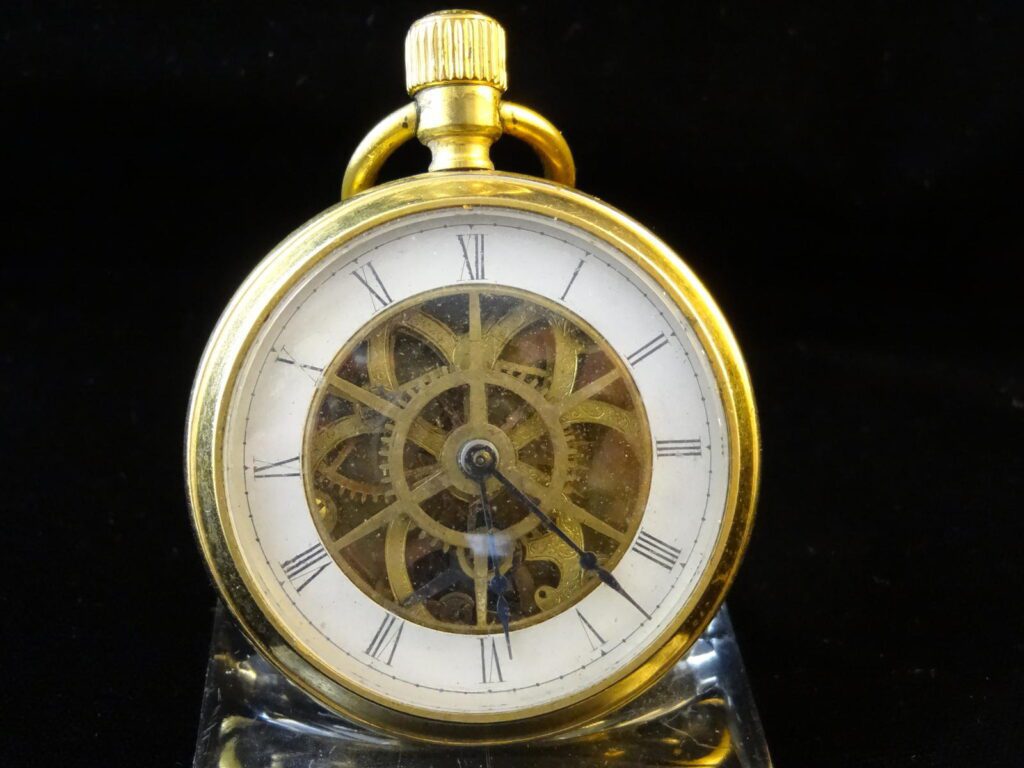Skeleton-Watch Fossil

Today we’re taking a snapshot. History houses many mechanicals in its catalog and the Waterbury “Long Wind” is one worth unearthing. In the late 1870s Waterbury Watch Co. sought to make a personal timepiece that could match the mass production wave that Waltham had begun in the 1850s, with an even more affordable price tag. Waterbury would eventually go on to become Timex—but they were looking for low pricing and quantity to set themselves apart from the start. Contracted by brass clockmakers Benedict and Burnam, Waterbury took their first natural step into watchmaking. Their Long Wind would be their first major release.
General
Specifications
The patent for the Long Wind was set up in 1878 and it debuted in 1880. Watchmaker D. Azro A. Buck (a long name) created the piece for Waterbury. It was designed/built with nickel plating on the case; it housed a movement with just 58 parts; it only had an hour hand; the original featured no watch crystal; and it had a 9 Foot Mainspring—giving the Long Wind its name. The simple design made the Long Wind incredibly inexpensive. It was just $3.50 to buy one when the closest competition was selling their watches from $8-$20. Updated models through the years would add more features. These included slightly more complex movements to accomodate a minute hand; a watch crystal; and a skeleton dial. A true skeleton-watch fossil today, the Long Wind set the tone for future inexpensive watch endeavors in the industry.
Long
Wind Ends

Eventually the Long Wind watches were discontinued in 1891. Waterbury watches became famous because of this model, however. Their watches became so famous that Mark Twain included them in his writing. In The Turning Point of My Life he wrote:
“Some rare men are wonderful watches, with gold case, compensation balance, and all those things, and some men are only simple sweet and humble Waterburys. I am a Waterbury. A Waterbury of that kind, some say.”
Even today, some folks refer to Waterbury Long Winds as the “poor man’s tourbillon” because of their inexpensive price tag and simple design. Unfortunately third-party merchants are what caused the discontinuation of the Long Wind—giving them away for free with other merchandise. Eventually Waterbury paired up with the brand Ingersoll to create even less expensive watches. Their first effort went over well. It was a mechanical they sold for $1.50. Ingersoll + Waterbury then furthered their efforts and by 1896 crafted the “Yankee”. The Yankee was the first true “dollar” watch—costing one buck—and totally reinvented watchmaking from that point onward. It’s estimated that dollar watches from this time, including the Long Wind (in that category), made up about 70% of watches in America. It’s not surprising, considering that hundreds-of-millions of them were made. On that note: Keep both eyes peeled for a Long Wind, or any other old fossils from that time circulating today. They’re fairly common—but rare to find in working condition.
Times Ticking has been in operation for more than 30 years, since 1982. We have performed watch repair for customers both locally and internationally. If it Ticks! We KNOW it! Our team of watch repair technicians have a combined experience in watchmaking of over 120 years.

